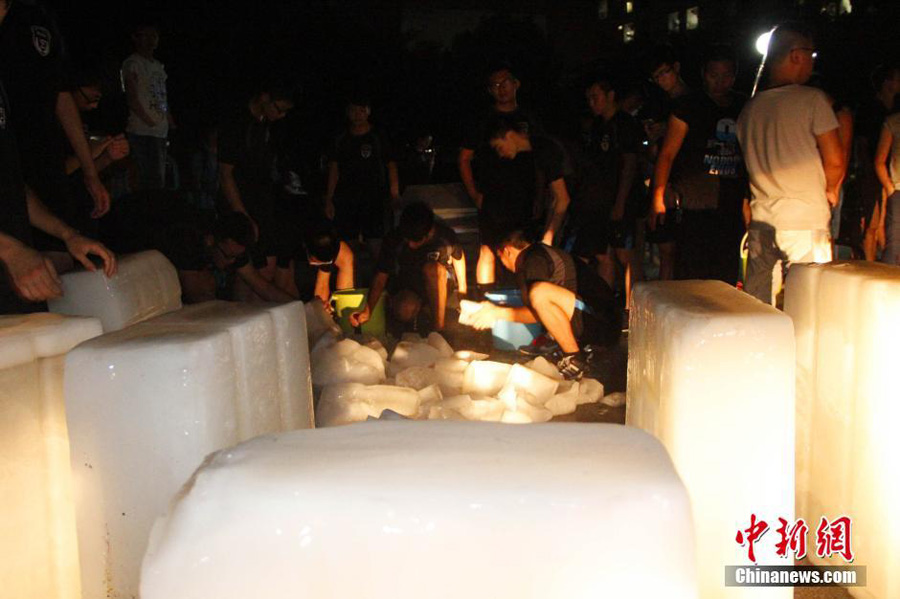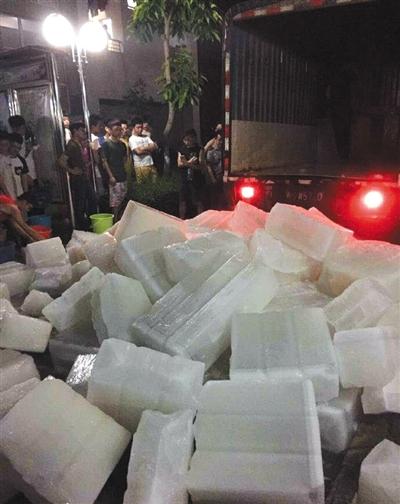From the picture you see that ice cubes were placed in front of a building in college campus of Guangxi. It was around 7.2 tons ice cubes carried from the ice making factory. It is midsummer and really hot in most parts of China now. The temperature is around 34 degrees these days in many parts of the country.
When we have no air conditioners in the dormitory, we still have many ways to get ourselves cool down, such as getting outside of the house in the night time, or in the day time, staying under the tree, or staying inside the great hall or stadium.
34 degrees is high but it is not an extreme temperature. Young kids can’t bear it. What I am caring about is our young kids’ adaptability to the environment. Looking at the students in my school, the problem is quite similar. You can often see that when doing morning exercise, during around 15 minutes, some students get fallen in a faint. Another example, students ask to open air conditioners when the temperature comes up to around 25 degrees. If it is not opened a class will not be continuous. Sometimes, when there was something wrong with the electricity, a class will be inefficient. Students in class will move restlessly and cannot be concentrated on their learning.
I doubt our young kids’ adaptability to the environment. Compared with the older generations, they are weaker. There was no air conditioner before. Workers worked in the sun with high temperature without much complaint and students kept quiet in the classroom. Farmers worked in the fields, cutting weeds with hoes so that weeds died in the sun as soon as possible.
Are younger generations weaker? Do you have any ideas about it?
I was recently in the US with temperatures of 35C + and low humidity, not too bad, I returned to Shanghai to temperatures at least 5 degrees cooler but high humidity, it was horrible.
Right. It affects the temperature in city area rather than that in rural areas.
On the whole it is not the heat that is a big problem, it is the humidity.
The ice would have to be make using electricity, or transported from great distances.
Both of these would cost money.
So which would be a more cost effective way to keep cool?
More trees on a campus would be one solution.
Very little money required and good for the environment.
Poor building design and ventilation is the problem - it is not like people don't know the varying temperatures in a particular location and it is not as if the technology is unavailable.
It is just that the architects don't factor this into their designs.
Solution - design buildings with solar powered A/C's









Comment